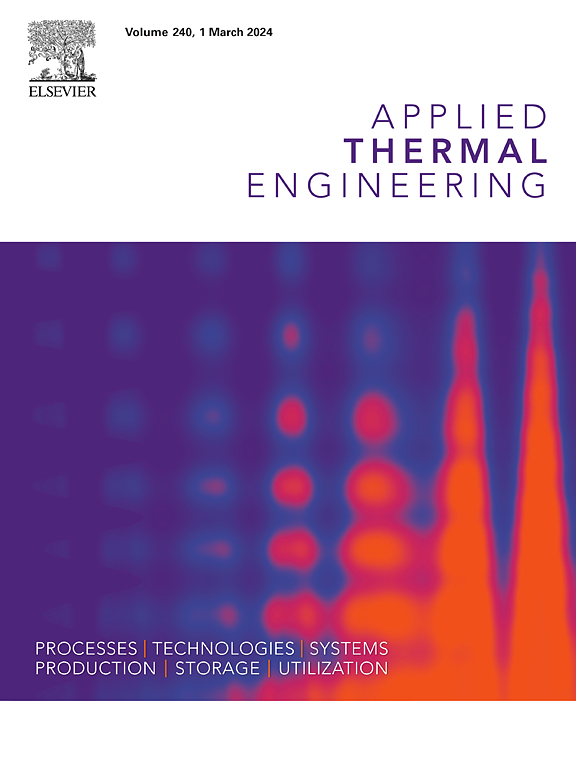大型商用质子交换膜燃料电池与新型会聚-发散流场和多种冷却剂流场的耦合研究
IF 6.9
2区 工程技术
Q2 ENERGY & FUELS
引用次数: 0
摘要
有效的热管理是商业化质子交换膜燃料电池的关键。以往的冷却剂流场设计研究往往受限于规模,缺乏与新型气体通道的耦合研究,忽略了大尺度下独特的温度分布和换热特性。在此基础上,提出了一种新型的会聚发散流场,并引入了两种具有五种不同冷却剂通道结构的冷却布局,建立了三维多相模型。结果表明,新型的收敛发散型结构不仅使净输出功率密度提高了23.65%,而且更有利于排出余热,温度均匀性更好。膜电极组件与冷却剂之间的温差决定了基于不同因素的冷却能力。在有限的冷却剂质量流量下,流量波动诱导能力具有显著的优势。与布置1相比,布置2可使最高温度降低约5 K,温度均匀性提高55%,热经济指数提高17。该研究可为具有新型气通道结构和冷却剂流场的下一代高功率密度质子交换膜燃料电池的耦合设计和优化提供创新指导。本文章由计算机程序翻译,如有差异,请以英文原文为准。
Coupling study of large-scale commercial proton exchange membrane fuel cell with novel convergent-divergent flow field and multiple coolant flow fields
Effective thermal management is particularly pivotal for the commercial proton exchange membrane fuel cell. The previous researches on coolant flow field design are always limited by scale and lack the coupling investigation with the novel gas channels, leading to the neglect of the unique temperature distribution and heat transfer characteristics in large-scale. Hence, the three-dimensional multiphase models are developed by proposing a novel convergent–divergent flow field and introducing two cooling layouts with five different coolant channel structures. The results indicate that the novel structure of the convergent–divergent pattern not only improves the net output power density by 23.65 %, but also is more conducive to removing waste heat and better temperature uniformity. The temperature difference between the membrane electrode assembly and the coolant determines the cooling capacity based on the different factors. The ability of flow fluctuation induction demonstrates the significant advantage under the limited coolant mass flow rate. Compared to layout 1, layout 2 can approximately reduce the max temperature by 5 K, improve temperature uniformity by 55 % and enhance thermal-economic index by 17. This study can provide innovative guidance for the coupling design and optimization of next-generation high power density proton exchange membrane fuel cell with novel gas channel structure and coolant flow field.
求助全文
通过发布文献求助,成功后即可免费获取论文全文。
去求助
来源期刊

Applied Thermal Engineering
工程技术-工程:机械
CiteScore
11.30
自引率
15.60%
发文量
1474
审稿时长
57 days
期刊介绍:
Applied Thermal Engineering disseminates novel research related to the design, development and demonstration of components, devices, equipment, technologies and systems involving thermal processes for the production, storage, utilization and conservation of energy, with a focus on engineering application.
The journal publishes high-quality and high-impact Original Research Articles, Review Articles, Short Communications and Letters to the Editor on cutting-edge innovations in research, and recent advances or issues of interest to the thermal engineering community.
 求助内容:
求助内容: 应助结果提醒方式:
应助结果提醒方式:


